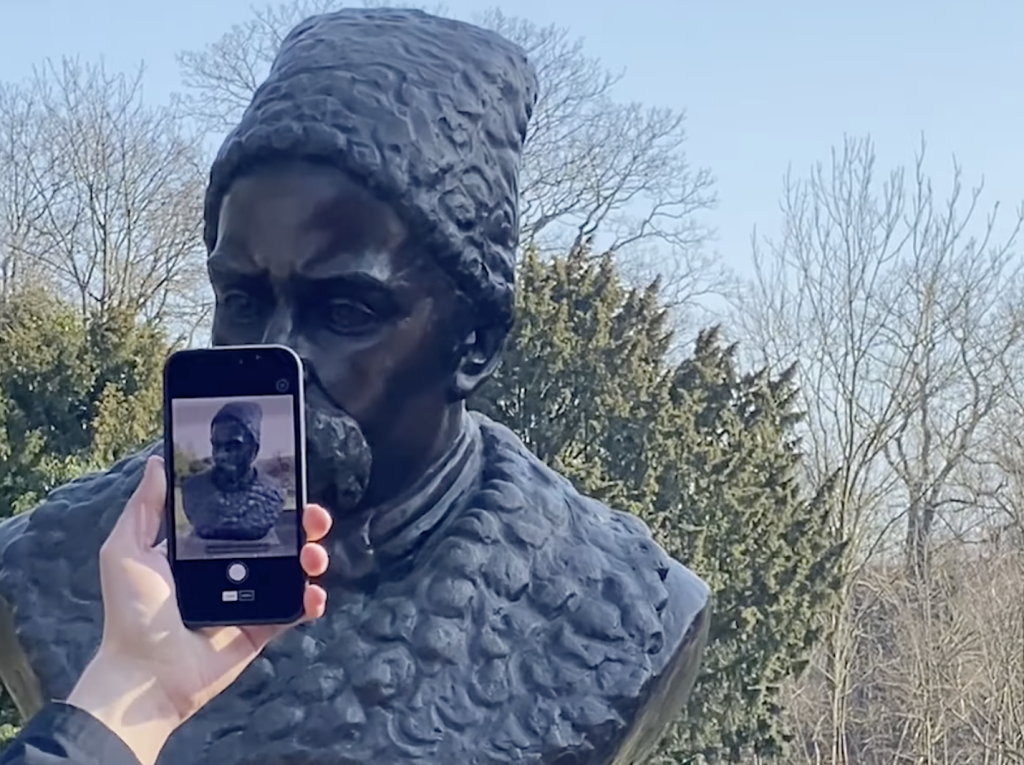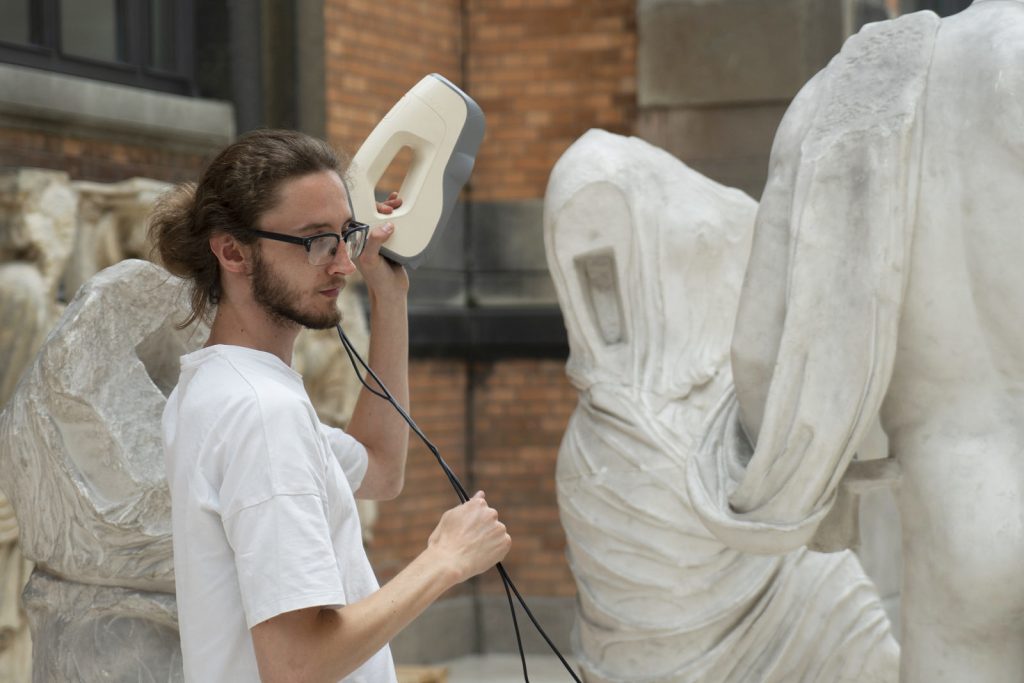Activists in Ukraine have begun using 3D scanning to create digital copies of the country’s heritage sites at risk of being destroyed by Russian forces.
With Russian shelling having flattened parts of cities like Mariupol and Kharkiv, Ukrainian volunteers are now moving to immortalize the nation’s landmarks before they suffer the same fate. As part of the Backup Ukraine initiative, some 6,000 users have already utilized a mobile scanning app to archive 3D models of monuments and historical sites alike, in a way that safeguards them for future generations.
“With this technology, there’s a possibility for everyday citizens to go out there and create quite literally a digital backup of their cultural heritage at a level far exceeding anything that was possible just a few years ago,” Tao Thomsen, co-creator of Backup Ukraine, told Business Insider. “Seeing it in front of your eyes, it is almost like you can touch it. I think that gives a much stronger emotional impact than just seeing the images.”
“We’re looking into how we can use this as an educational tool as well. How can we use this to drive empathy, not just in Ukraine, but in every country in the world?”
The cultural cost of Russia’s war
Under the 1954 Hague Convention, heritage sites are deemed to be civilian by nature, and as such, countries at war are obliged to avoid deliberately damaging or using them for military purposes. These rules were reinforced by a UN resolution in 2017, which made the destruction of such landmarks a war crime, after a series of UNESCO world heritage sites were wiped out by ISIS in Iraq and Syria.
Yet, despite the rules introduced to protect such sites, there’s evidence to suggest that the security of Ukraine’s aren’t being respected by advancing Russian forces. Not only has Russia engaged in indiscriminate bombing since its invasion began, but it has reportedly started to ‘Russify’ occupied territories, amid claims from President Putin that Ukrainian history is not distinct and worth protecting.
UNESCO has also managed to quantify this destruction, announcing that 29 religious sites, 16 historical buildings, four museums and four monuments in Ukraine were flattened or partially destroyed in March 2022 alone. The destruction of these sites, which included the Holocaust Memorial Centre near Kharkiv, has since prompted an international effort to help protect Ukraine’s remaining artifacts.
“We must safeguard the cultural heritage of Ukraine,” Audrey Azoulay, Director-General of UNESCO, said at the outset of the war. “As a testimony to the past, but also as a catalyst for peace and cohesion for the future, which the international community has a duty to protect and preserve.”

‘Backing up’ Ukrainian heritage sites
Having heard rumors of heritage sites being destroyed during the war, Thomsen and his team concluded that Russia may be “willfully destroying the material foundation of [Ukraine’s] culture,” hence they sprung into action. To prevent the country’s monuments being lost for good, Thomsen and co. have set up Backup Ukraine, an archive onto which volunteers can upload 3D models of them.
To make the initiative accessible to everyday Ukrainians as possible, Backup Ukraine’s organizers have built it around Polycam, a mobile LiDAR scanning application, that allows users to rapidly create dimensionally-accurate 3D models.
Initially, Thomsen says that Ukrainians were hesitant to risk going outside to take part, but his team of contributors has now expanded significantly from the 150 volunteers he started with. While the initiative began as a way to preserve cultural heritage, he adds that many users have started to utilize it to document events on the ground, and provide an insight into the damage caused by Russia’s war.
The initiative is being carried out alongside the Danish National Committee of UNESCO, Blue Shield Denmark, Polycam and the Vice Media Group. For now, Backup Ukraine is only open to volunteers authorized by its organizers, who are discouraging contributors from scanning near conflict zones or without permission, but continuing to enlist wherever they can.
Those based in Ukraine and interested in contributing can find out more about Backup Ukraine here.

Archiving through 3D scanning
While Backup Ukraine is no doubt working towards a worthy cause, it’s far from the first initiative to harness the power of 3D scanning for archiving applications. During 2017, when ISIS was busy causing havoc across Syria and Iraq, the Dubai Future Foundation managed to 3D print replicas of artifacts destroyed by its forces.
On a wider scale, projects like Scan the World have also sought to make such artifacts accessible to all, by establishing a community-led ‘open-source museum’ of downloadable models. Thus far, the group has built up a free database of over 20,000 STL files, and it continues to expand, partnering with Google Arts & Culture to grow its collection of 3D printable art in July last year.
In fact, the 3D printing of artifacts has become so common that Cubicure has even developed an SLA 3D printable ivory substitute, which can be used to restore damaged historical objects. Using its ‘Digory’ material, researchers have already managed to repair a 17th century coffin, without needing to use any real ivory.
To stay up to date with the latest 3D printing news, don’t forget to subscribe to the 3D Printing Industry newsletter or follow us on Twitter or liking our page on Facebook.
For a deeper dive into additive manufacturing, you can now subscribe to our Youtube channel, featuring discussion, debriefs, and shots of 3D printing in-action.
Are you looking for a job in the additive manufacturing industry? Visit 3D Printing Jobs for a selection of roles in the industry.
Featured image shows a bust being scanned using the Polycam app. Photo via Backup Ukraine.


